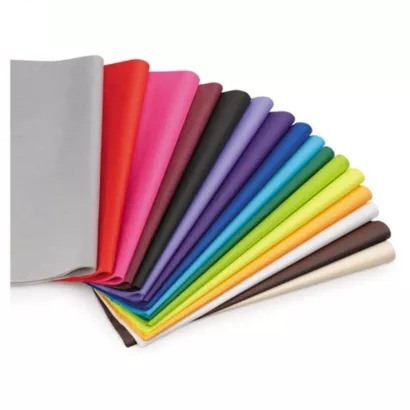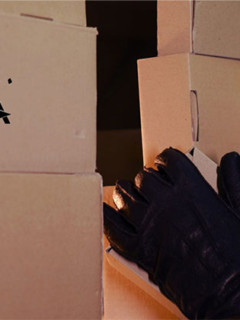Lost loads and lost car parts – every day the traffic news warns of such danger spots on German motorways. According to the website rp-online.de, unspecified “objects” are at the top of the list: at 13.8%, they account for the lion’s share of warnings. They are closely followed by people (13.5%), tyre parts (9.4%), metal parts and vehicle parts such as exhaust pipes or bumpers. Of course, there are also curious reports, such as the lost beach chair, refrigerators and Christmas trees. Such reports are then probably often due to the number four listed on rp-online: The tension belt!
Securing loads with tension belts
Tension stra ps (also called lashing straps) are the fourth most frequently lost item at 3.5%. No wonder: Every day, 238 million tonnes of goods are transported on German roads (domestic traffic), plus another 46 million tonnes of goods as cross-border shipments and 61 million tonnes of goods as cross-border receipts. All these goods have to be secured, in general cargo vans just as much as in vans and trailers. And that often seems to go wrong…Correct load securing with lashing straps
In addition to checking for technical defects and compliance with driving and rest times, the motorway police also check for correct load securing. Paragraph 22, paragraph 1 of the Road Traffic Act describes in general terms that the load […] must be stowed and secured in such a way that it cannot slip, fall over, roll back and forth, fall down or cause avoidable noise, even during emergency braking or sudden evasive action. It goes on to say that this must be done in accordance with the recognised rules of technology.Load securing has changed. But has it also improved?
A lot has happened in the last 10 years in terms of load securing: New scientific findings, new materials and improved technology, but also the basic and advanced training regulations for professional drivers have ensured that goods are better secured. However, it is not uncommon for those for whom transporting goods is not an everyday task to underestimate the forces acting on the load: small private transporters, the trailer with green cuttings from the local gardening company, the transporter of the craftsman’s company. And their tension belts are then lying on the motorways.What types of tension belts are there? How is a tensioning strap constructed?
In handling, a distinction is essentially made between two types:- One-piece tensioning belt: Used mainly for bundling or strapping, less for securing loads in road transport. One end of the strap is firmly connected to the locking element. The loose end is passed through the locking element, tightened and fixed. This type of tension belt is often used to secure goods on a load carrier (pallet, trolley…) during internal transport.
- Two-part tensioning strap: The two-part tensioning or lashing strap can be used to secure loads by lashing them down and lashing them diagonally. The 2-part combination consists of a webbing strap with end fitting (loose end) and a webbing strap with end fitting and tensioning element or ratchet (fixed end). A label with specific information must be attached to both parts. This variant is the most common in German (professional) goods traffic, accounting for around 90%.
What role do the material and fastening element play in the tensioning belt?
In the rarest of cases, the material of the strap is the reason why the load becomes self-supporting. Apart from tensioning straps made of cotton (particularly soft and gentle on the surface, but only capable of bearing loads of up to around 235 kg), the vast majority of tensioning straps used are made of man-made fibres and are therefore extremely strong. With a tensile strength of up to 6,500 kilograms, polyester tensioning stra ps, for example, are considered particularly weatherproof and tear-resistant.Of course, sharp edges – in combination with high forces – sooner or later take their toll on lashing straps. However, the most common weak point, apart from incorrect handling, is the tensioning or locking element. Again, a distinction is made between two main types:
- Clamp lock: Since it is only clamped and no further tension can be built up, as is the case with a ratchet, this type of locking element is only suitable for small weights.
- Short lever ratchet (also standard ratchet or pressure ratchet): With a lever length of about 22 cm, rather low pre-tensioning forces of 200 to 350 daN can be achieved – even if the tensioning belt itself would be capable of “more”…
- Long lever ratchets (pull ratchets): Thanks to the lever length of about 33 cm, a significantly higher pre-tensioning force of up to 500 daN can be achieved. The big advantage: with only one tension belt with a long-lever ratchet, the same load weight can be secured for which two tension belts with a short-lever ratchet would be needed – a clear saving in working time.
What are the different types of end fittings for tension belts?
Common end fittings are double-pointed hooks, carabiners with security, flat hooks with security, claw hooks, double-stud fittings, single-stud fittings, D-rings or board wall holders. It is a science in itself, and it is necessary to check which one is suitable for each application. Snap hooks, for example, have the advantage that they close automatically thanks to the snap lock and can only be released by applying manual force. End fittings with a safety catch offer a similar effect. This means that a connection is maintained even if no tension has been created. Pointed hooks are convenient to use because they only have to be hooked into the lashing eye, anchor point or perforated plate. Should be clear: Never extend lashing straps by knotting them! There are general points to note about the material of the narrow fitting: It should be stainless steel: The material must withstand some tensile force and should be weather and temperature resistant.Standard for tension straps
According to the applicable European standard DIN 12 195-2, lashing straps made of man-made fibres must at least provide information about:- the standard to which the strap conforms
- the material – can also be recognised at first glance by the colour of the label. Blue stands for polyester (PES), brown for polypropylene (PP), green for polyamide (PA) and white for other materials.
- the length
- the manufacturer
- the date of manufacture (there is no “expiry date”, as this can vary greatly depending on how the tensioning strap is used. When a belt is “worn out”, i.e. no longer suitable for use on the road and must be taken out of service, can be seen from this overview by the Federal Association for Transport and Traffic Science: http://www.bgl-ev.de/images/downloads/programme/merkblatt_ablegereife.pdf
- the lashing capacity (LC): The LC is the lashing capacity of the strap itself, it indicates the maximum load capacity of the lashing strap in a straight pull. For strapping, the specified value can be doubled.
- the Standard Hand Force (SHF) or normal hand force is the force that the user has to apply to tighten the ratchet. It is usually 50 daN, which corresponds to 50 kg.
- The Standard Tension Force (STF) or normal pretensioning force indicates which force is transferred from the ratchet to the lashing equipment as pretensioning force by the SHF (hand force). Put simply, it indicates how powerful the ratchet is.
- Elongation under permissible (maximum) lashing force in percent: It is a maximum of 7%, usually less. For example, a 3 m long tensioning strap with an elongation of 4% will be 312 cm long under maximum elongation.
When is a tensioning strap ready for discard?
Lashing straps are exposed to high loads. However, a lot depends on their perfect condition. Therefore, tensioning and lashing straps must be checked regularly and replaced if necessary. Before each use, the lashing equipment must be checked to ensure that it is in perfect condition (visual inspection). This includes:- Are there any cuts or indentations?
- Are the seams intact? Are there any damaged joints?
- Are there any deformations on the belt?
- Is the label (on both parts, if two-piece!) present and perfectly legible?
- Is the tensioning element free of cracks or breaks?
- Were there any force effects that deformed the tensioning element or the end fitting?
- Are the clamping element and the end fitting free from corrosion?
By the way: Repairs are permissible in certain cases, but must be carried out absolutely and exclusively by expert personnel – usually by the manufacturer. Rarely is such a repair worthwhile; also in terms of safety, the lashing strap should be discarded and replaced if in doubt. This also applies if the lashing strap does not “pass” the prescribed annual professional examination.
Which lashing strap should I use now?
Unfortunately, there is no one, short answer to this. However, there are a number of freely available calculators that at least provide information on the required number and strength of the lashing straps. In order to secure a load safely and in accordance with the rules, the following sizes (at least) must be known:- Circumference of the load (results in required length)
- Weight of the load
- Sliding friction coefficient : This value can be improved considerably by using anti-slip mats!
- Forces acting on the selected type of transport (road transport, container ship, rail transport, air transport…) or the acceleration factors.
- Bracing angle or lashing angle (?)
- is loaded with a tight fit or without a tight fit (free-standing)
- achievable pretensioning force (STF) of the lashing strap
We have compiled a small selection of online calculators to help you choose the right tensioning strap here:
https://interaktiv.kues.de/ladung/index.asp
https://www.spanset.com/de_de/products/zurr-rechner
http://ladungssicherung.lasiprofi.de/de/niederzurren.html















